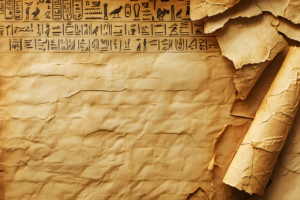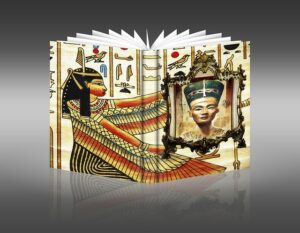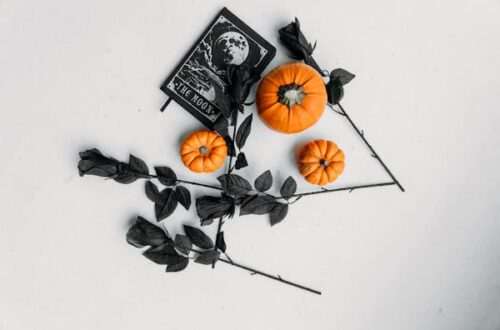
Ancient egyptian spells and magic
Table of Contents
- The foundations of Ancient Egyptian Magic
- The role of spells in ancient egyptian society – Ancient egyptian spells and magic
- Types of Ancient Egyptian Spells
- The language of magic: Hieroglyphs and spells
- Magical tools and their significance
- The influence of ancient egyptian magic on modern practices
- Conclusion
The ancient Egyptians are renowned for their rich tapestry of mythology, elaborate rituals, and profound beliefs in the spiritual world. Spells and magic were integral to their daily lives, interwoven into their religion, culture, and understanding of the universe. This article delves into the significance, types, and practices of ancient Egyptian spells and magic, revealing the profound connection the Egyptians had with the divine and the supernatural.

The foundations of Ancient Egyptian Magic
Understanding egyptian religion and beliefs
The ancient Egyptians held a polytheistic belief system, worshiping a vast array of deities who governed various aspects of life and the cosmos. Gods like Ra (the sun god), Osiris (god of the afterlife), and Isis (goddess of magic) played pivotal roles in their mythology. This pantheon influenced their understanding of magic, which was seen as a divine force to be harnessed for protection, healing, and empowerment.
The Concept of Ma’at
Central to Egyptian spirituality was the concept of Ma’at, representing truth, balance, order, and justice. Ma’at was crucial for maintaining harmony in the cosmos and society. Magic was employed to restore or maintain Ma’at, ensuring the favor of the gods and the well-being of the community. Spells were often invoked to correct imbalances or to protect individuals and the state from chaos and disorder.

The role of spells in ancient egyptian society – Ancient egyptian spells and magic
Everyday magic
Magic permeated the daily lives of the ancient Egyptians. It was not merely confined to grand rituals or religious ceremonies; it was a practical tool used to address everyday concerns, such as health, love, and protection. For instance, women often employed spells for fertility and childbirth, while individuals sought spells for healing or to ward off malevolent forces.
Rituals and Ceremonies
Many spells were performed during elaborate rituals led by priests, who were seen as intermediaries between the gods and the people. These rituals often involved offerings, prayers, and the recitation of specific spells aimed at invoking divine powers. Notable rituals included those for healing, protection, and the afterlife, where spells would guide the deceased through the perilous journey to the underworld.
Types of Ancient Egyptian Spells
Protective spells
Protective spells were designed to shield individuals from harm and malevolent forces. These spells often invoked the power of deities and utilized amulets and charms. Common protective spells included:
- The Spells of Isis: Isis, the goddess of magic, was frequently called upon for protection. Spells invoking her name were believed to provide safety and security.
- The Eye of Horus: This powerful symbol represented protection, healing, and restoration. Amulets featuring the Eye of Horus were commonly worn for defense against evil spirits.
Healing spells
Healing spells were integral to ancient Egyptian medicine. Healers combined practical medicine with magical practices to treat ailments. Spells often involved:
- Incantations: Specific phrases were recited to invoke divine healing powers. For example, the Cippus of Horus, a healing text, contained spells to cure various diseases.
- Herbs and rituals: Healers used natural remedies alongside spells. Rituals often included the use of sacred herbs, oils, and offerings to deities.
Love spells
Love and desire were also significant aspects of ancient Egyptian magic. Love spells sought to attract partners, rekindle passion, or even protect relationships. Common practices included:
- Potions and incantations: Spells might involve the creation of love potions, often combined with specific herbs believed to evoke attraction.
- Symbols and amulets: Symbols such as the lotus flower, representing beauty and love, were incorporated into spells to enhance romantic connections.
Funerary spells
Funerary spells were vital for ensuring a safe passage to the afterlife. The ancient Egyptians believed in an elaborate journey after death, where the deceased would face trials and judgment. Key components included:
- The Book of the Dead: This collection of spells served as a guide for the deceased, providing instructions and protective spells for navigating the afterlife. It included spells for judgment and protection from dangers.
- Ritual offerings: Offerings of food, goods, and prayers were made to sustain the deceased on their journey. These offerings were often accompanied by spells invoking the gods’ favor.

The language of magic: Hieroglyphs and spells
The power of words
In ancient Egyptian culture, words held immense power. Spells were often inscribed in hieroglyphs on papyrus, tomb walls, and amulets. The careful choice of words and phrases was believed to influence the effectiveness of the spell. Spells often began with phrases such as “Hail to you, O great god,” invoking the deity’s presence and favor.
Example of a spell
One well-known spell from the Coffin Texts, used in funerary contexts, illustrates the language and structure of ancient Egyptian spells:
“I am the great one, the protector of the tomb. I will not allow the wicked to enter. The one who wishes harm will be repelled.”
This incantation showcases the direct appeal to divine protection, emphasizing the role of the spellcaster in creating a protective barrier.
Magical tools and their significance
Amulets and talismans
Amulets were crucial in ancient Egyptian magic, often inscribed with spells and symbols to provide protection, health, and luck. Common amulets included:
- Ankh: Symbolizing life and immortality, the ankh was worn for protection and vitality.
- Scarabs: Associated with regeneration and transformation, scarab amulets were believed to offer protection in the afterlife.
Ritual implements
Various tools were utilized during magical rituals, each with its significance. These included:
- Sistrum: A musical instrument used in rituals to invoke divine presence and create a sacred atmosphere.
- Censers: Used for burning incense during rituals, creating an aromatic environment conducive to spiritual communication.
The influence of ancient egyptian magic on modern practices
Revival of ancient practices
The fascination with ancient Egyptian magic has seen a resurgence in modern times. Many people are drawn to the mystical elements of Egyptian spells and rituals, integrating them into contemporary spiritual practices.
Incorporation in modern wicca and neopaganism
Modern Wicca and other neopagan traditions often incorporate elements of ancient Egyptian magic. Practices such as invoking deities, using correspondences like colors and herbs, and performing rituals for protection and love have roots in ancient Egyptian traditions.
The study of egyptology and magic
Scholars and practitioners continue to explore the vast corpus of ancient Egyptian texts, including spells, incantations, and rituals. The study of Egyptology has provided insights into the magical beliefs and practices of this ancient civilization, allowing for a deeper understanding of their culture and spirituality.
Conclusion
Ancient Egyptian spells and magic were integral to the lives of the people who inhabited the banks of the Nile. Through a rich tapestry of rituals, incantations, and the invocation of divine forces, they sought to navigate the complexities of life, death, and the afterlife. The enduring legacy of ancient Egyptian magic continues to captivate modern seekers, offering a glimpse into a world where the divine and the human were deeply intertwined. By understanding these ancient practices, we can appreciate the profound spirituality that shaped one of history’s most fascinating civilizations.
Bibliography:
-
Greek Magical Papyri
A collection of magical spells, formulas, hymns, and rituals from Graeco-Roman Egypt, written mainly in ancient Greek.- ISBN: 978-0226044477
- Wikipedia:
-
The Key of Solomon (Clavicula Salomonis)
A pseudepigraphical grimoire attributed to King Solomon, containing various spells and instructions on summoning spirits.- ISBN: 978-1578632206
- Wikipedia: Key of Solomon
-
Shams al-Ma’arif (The Book of the Sun of Gnosis)
A 13th-century Arabic grimoire written by Ahmad ibn Ali al-Buni, focusing on Islamic magic and the esoteric properties of letters and numbers.- ISBN: 978-1986020807
- Wikipedia: Shams al-Ma’arif
-
The Book of the Dead
An ancient Egyptian funerary text consisting of spells to assist a dead person’s journey through the underworld.- ISBN: 978-1453718779
- Wikipedia: Book of the Dead
-
Testament of Solomon
A pseudepigraphical text attributed to King Solomon, detailing his interactions with various demons and the construction of the Temple.- ISBN: 978-1500735478
- Wikipedia: Testament of Solomon
-
Picatrix (Ghayat al-Hakim)
An 11th-century Arabic grimoire on astral magic, later translated into Latin, covering various magical practices and astrological theories.- ISBN: 978-0892541544
- Wikipedia: Picatrix
-
Ars Notoria
A medieval grimoire purporting to grant the reader mastery of academia, including the liberal arts and philosophy, through prayers and magical words.- ISBN: 978-1461045200
- Wikipedia: Ars Notoria
-
The Book of Abramelin
A 15th-century grimoire attributed to Abraham of Worms, detailing a system of magic involving invoking one’s guardian angel.- ISBN: 978-0892541278
- Wikipedia: The Book of Abramelin
-
The Grimoire of Pope Honorius
A 17th-century grimoire attributed to Pope Honorius III, containing instructions for summoning and controlling spirits.- ISBN: 978-1161356822
- Wikipedia: Grimoire of Pope Honorius
-
The Lesser Key of Solomon (Lemegeton)
A compilation of medieval grimoires, focusing on demonology and the summoning of spirits.- ISBN: 978-1578632206
- Wikipedia: Lesser Key of Solomon




